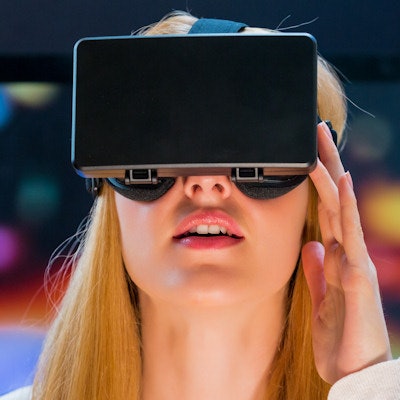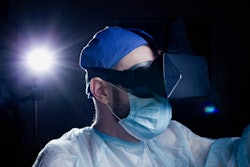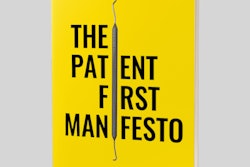
This is a two-part series exploring the potential and real applications for virtual reality (VR), augmented reality (AR), and mixed reality (MR) within dentistry. Part 1 focused on use in dental education and practice. Part 2 explores how these technologies can improve the patient experience within a traditional dental clinic.
In the 1990s, a team of University of Washington researchers made a discovery that would alter the course of virtual reality in healthcare. They found that immersion in a virtual world dramatically reduced burn victims' reported pain. At the time, the team chalked their findings up to distraction, but two decades later, researchers know something greater is at work: VR alters brain patterns.
"When you look at a brain scan for a patient under VR and a patient on morphine, it's very similar," Bryan Laskin, DDS, told DrBicuspid.com. "You physiologically don't feel pain in the same way you did without virtual reality. It's not just a distraction, it's actually a sedative, and that's why it works to be a drug-free sedation."
Dr. Laskin is a practicing general dentist and the founder of OperaVR, a company that seeks to manage patients' dental pain and anxiety through virtual reality experiences. He came up with the idea after attending a conference on virtual reality in healthcare and noting that some of VR's strongest therapeutic attributes could be directly used and tested within dentistry.
"There are two major issues that no one else is tackling," Dr. Laskin said. "One is let's get patients who have acute anxiety while getting a procedure, and there's no better spot to work on that than dentistry. And the other piece is let's spread the word about virtual reality benefits to patients. There's really not a better place to do that than a dental practice."
 Dr. Bryan Laskin works on a patient immersed in a virtual reality experience. Image courtesy of OperaVR.
Dr. Bryan Laskin works on a patient immersed in a virtual reality experience. Image courtesy of OperaVR.Sit back and relax
The OperaVR experience works like this: Patients put on a VR headset and headphones, and they're transported to a calming scene, such as waves crashing on a beach or a flower slowly blooming. They can also pick from calming music, tonal therapy, and guided meditation to listen to during their dental visit, and the dental team controls the video and audio tracks.
Dr. Laskin's practice uses VR for both hygiene and operative appointments. Patients also see educational content related to their type of appointment, such as a hygienist teaching them how to properly brush or postoperative care instructions.
“I call it digital nitrous because it works very similarly to nitrous oxide.”
"I call it digital nitrous because it works very similarly to nitrous oxide," he said. "That's another reason why it's a good fit for dentistry. We're already using something very similar to the way VR works, but there're no drugs for virtual reality, and there're no hoses for the operator to deal with."
And like nitrous oxide, not all patients want a VR experience at the dental clinic, Dr. Laskin noted. Some people like to maintain eye contact with their dentist or hygienist, while others want to see what's going on. But in the eight months that he's been using VR in his practice, Dr. Laskin said the vast majority of his patients, even those without anxiety, have enjoyed the experience, and they haven't had trouble following instructions, such as "open wider" or "turn toward me."
"To this day, when I put the VR headset on a patient, I think, 'I hope it works as well as last time,' " he said. "I'm still blown away by how effective it is."
Since introducing virtual reality in his practice, Dr. Laskin has noticed a "huge" uptick in referrals, with people coming to his office specifically for VR, and patient reactivation has skyrocketed. OperaVR is currently conducting a survey, but the preliminary numbers show that practices that have adopted the technology attract a minimum of two new patients per month on average.
Dr. Laskin thinks this apparent success may be because VR addresses a need that dentistry has struggled with for years -- how to make patients feel at ease and reduce actual or perceived pain.
"From the acute anxiety management and from the marketing aspect, there's not really a better place than dentistry," he said. "There are other uses for VR, such as chronic pain management and wound care and things like that. But dentistry is the perfect application for virtual reality because there is not really any pain in today's dentistry if the dentist knows how to manage pain. If you can manage the anxiety, you can manage the pain, and there is lots of anxiety out there."



















